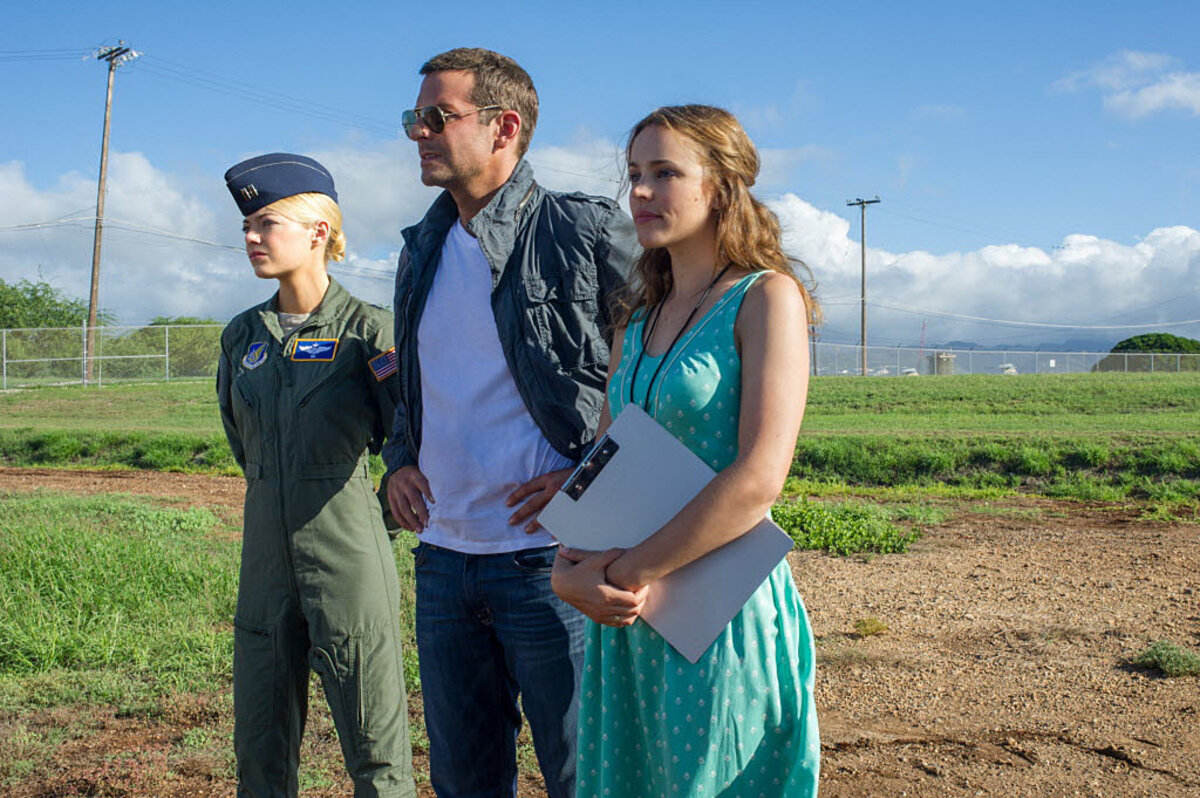Cameron Crowe apologizes for casting in 'Aloha': How prevalent is racial 'whitewashing'?
Loading...
After widespread accusations of "whitewashing" about his latest film, "Aloha," Oscar-winning writer and director Cameron Crowe apologized today on his to those who felt the casting, particularly that of Emma Stone as a half-Asian character, was dismissive of the people of Hawaii.
ŌĆ£I have heard your words and your disappointment, and I offer you a heart-felt apology to all who felt this was an odd or misguided casting choice," Crowe wrote.
But Mr. Crowe defended Ms. Stone and said his decision to cast her as Allison Ng was because the character was based on a ŌĆ£real-life, red headed local.ŌĆØ
"As far back as 2007, Captain Allison Ng was written to be a super-proud ┬╝ Hawaiian who was frustrated that, by all outward appearances,┬Āshe looked nothing like one," he wrote.
"Whether that story point felt hurtful or humorous has been, of course, the topic of much discussion," he wrote. "However I am so proud that in the same movie, we employed many┬ĀAsian-American, Native-Hawaiian and Pacific-Islanders, both before and behind the cameraŌĆ” including Dennis 'Bumpy' Kanahele, and his village, and many other locals who worked closely in our crew and with our script to help ensure authenticity."
In the movie, which opened May 29 and has an 18 percent rating on the film site s, Stone plays Allison Ng ŌĆō a character of Hawaiian-Chinese-Swedish decent. Casting a Caucasian actress in the role of an Asian-American, critics say, contributes to the exclusion of minority voices from Hollywood ŌĆō and takes away a rare starring role from minority actors, instead relegating them to the background.
ŌĆ£60 percent of HawaiiŌĆÖs population is AAPIs (Asian American and Pacific Islander). Caucasians only make up 30 percent of the population, but from watching this film, youŌĆÖd think they made up 90 percent,ŌĆØ said Guy Aoki, Founding President of the Media Action Network for Asian Americans and a former Hawaii resident, in a .
ŌĆ£This comes in a long line of films ('The Descendants,' '50 First Dates,' 'Blue Crush,' 'Pearl Harbor')┬Āthat uses Hawaii for its exotic backdrop but goes out of its way to exclude the very people who live there. ┬ĀItŌĆÖs like tourists making a film about their stay in the islands, which is why so many locals hate tourists. ┬ĀItŌĆÖs an insult to the diverse culture and fabric of Hawaii.ŌĆØ
Numerous critics have said that "Aloha" is far from an anomaly, and that ŌĆ£whitewashing,ŌĆØ casting Caucasian actors in minority roles, has been around for decades. In fact, the practice has been around since Luise Ranier was cast in "The Good Earth" and Warner Oland played Charlie Chan in the 1930s. Other examples include John Wayne as Genghis Khan, Katherine Hepburn in "Dragon Seed," in 1944, and Mickey Rooney, whose portrayal of I.Y. Yunioshi in "Breakfast at Tiffany's" has been widely condemned as offensive.┬Ā
ŌĆ£Asian erasure is so normalized (and much worse, codified in ┬Āof professional advancement) that I canŌĆÖt even get my blood up about the idiocy that allowed these castings,ŌĆØ Jia Tolentino for Jezebel. ┬Ā
ŌĆ£Emma Stone as Allison Ng, but also Josh Hartnett as an┬Ā, Jake Gyllenhaal as the Prince of Persia, Carey Mulligan as the ŌĆ£LatinaŌĆØ love interest in┬ĀDrive,┬ĀScarlett Johannson as the Asian lead of┬ĀGhost in the Shell.ŌĆØ┬Ā
Interestingly, some of the most successful multiracial actors in Hollywood aren't widely known for their Asian heritage.
ŌĆ£Often the logic is that if they can pass as white, they're assumed to be white: Darren Criss on┬ĀGlee. Elyes Gabel on┬ĀScorpion. The films of Keanu Reeves, Rob Schneider, and Vanessa Hudgens, to name just a few of the many part-Asian actors who end up playing white characters,ŌĆØ wrote journalist Alex Jung for .
ŌĆ£The fact is that Hollywood narratives haven't been able to wrap their minds around the fact that Asian-Americans are multiracial.ŌĆØ
As the blog was quick to point out, despite the assertion by a certain noteworthy American playwright and director that there ŌĆ£arenŌĆÖt any Asian movie stars,ŌĆØ Asian-American actors such as Lucy Liu and John Cho have raked in billions of dollars during their careers. (And as it also noted, that's not even beginning to discuss the many Asian movie stars, such as Jackie Chan, Jet Li, and Rinko Kikuchi, who have enjoyed international box office success.)
Moreover, there are some noteworthy examples of diversity in entertainment. Observers say the cast of the "Fast and the Furious" series ŌĆō the latest entry of which, was released in April, accurately represents AmericaŌĆÖs racial diversity.
ŌĆ£At last, here was a cast that reflected the reality of our countryŌĆÖs racial makeup: 37 percent of Americans now identify as nonwhite, and the US Census Bureau projects a ŌĆ£majority-minorityŌĆØ population in 2043,ŌĆØ wrote Chris Lee for
And television provides additional examples of racially diverse casts.┬Ā
This winter, ABC released the first sitcom to star Asian-American actors in 20 years, "Fresh off the Boat," although it also faced controversy, some critics said, for perpetuating Asian stereotypes.
And "Hawaii Five-0," the remake of the classic television series, has been praised for depicting a wide variety of Asian and multiethnic characters.
"The cast is ... fabulously diverse, which allows a good chunk of the viewing public to recognize itself on-screen," Slate culture critic June Thomas.
"The supporting cast, meanwhile, is more multiracial than the riders of the R train to QueensŌĆöAsian, Caucasian, African-American, Latino, Pacific Islander, and┬Ā┬Āactors have all earned a paycheck on the show."





